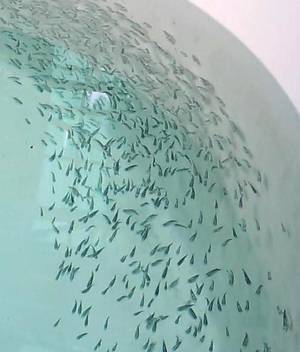Monthly Archives: July 2017
22nd
21st
20th
19th
18th
17th
16th
15th
Breakthrough in mass scale seed production of Indian pompano
It is a first of its kind in the world, says CMFRI scientist

The regional centre of ICAR-Central Marine Fisheries Research Institute here has made a major breakthrough by undertaking mass scale seed production of Indian pompano for the first time in the world.
Indian pompano (trachinotus mookalee) is a marine fish belonging to the family Carangidae. It is low in landing from the wild. It contains Omega 3 and 6 fatty acids. It is sold in the domestic market at ₹200 to ₹300 per kg.
The species is distributed in the Indo-West Pacific region and present in 15 countries of the Asian continent. In India, it is reported from both the west and east coasts.
It has sporadic occurrences in bays and lagoons, and the adult fish prefers shallow coastal waters with rocky areas.
Senior scientist in charge of the regional centre Subhadeep Ghosh told The Hindu that the fish was considered to be a good candidate species for aquaculture due to its fast growth rate, easy adaptability to culture conditions, quick acceptance of artificial feed, pleasant appearance, good meat quality, and high consumer preference. In addition, it can be successfully cultured in tanks, ponds and cages.
Broodstock collection
In a bid to diversify Indian mariculture, breeding and seed production of the species was initiated at the regional centre with broodstock collection in 2011.
Initial success in seed production on a small scale was achieved in early 2014. However, seed could not be produced consistently due to loss of broodstock maintained in the cage by the effect of the catastrophic Hudhud cyclone that hit the Visakhapatnam coast that year.
Broodstock collection was initiated again in 2015 and the fishes were stocked in the land-based Re-circulating Aquaculture System (RAS) for development and maturation.
“With manipulation of water quality and feeding protocols, fishes were induced to spawn in the RAS and mass scale seed production was achieved in early 2017,” Dr. Ghosh said.
Metamorphosis from larvae to fry started on the 17th day post-hatch and was completed by the 22nd day. After 30 days of rearing, the survival rate was around 17.2% and the fry reached an average size of 2.9 cm in length and 1.27 gm in weight. A few thousand fry were transferred to the Veraval Regional Centre of CMFRI in Gujarat and are being nursery-reared for stocking in cages.
Another few thousand fry were transferred to Nagayalanka in Krishna district of Andhra Pradesh and are being nursed prior to release in the pond. The remaining fry, again a few thousands, are being nursery-reared at the Visakhapatnam Regional Centre of CMFRI.
He said the seed would be stocked in open sea floating cages for grow-out very soon.
This was the first case of successful mass scale seed production of Indian pompano under confinement anywhere in the world.
The success raised hopes for culture of the fish using hatchery produced seed in India and will present enormous scope for aquaculture business opportunity in the near future for Indian fish farmers through species diversification.
source: http://www.thehindu.com / The Hindu / Home> News> Cities> Visakhapatnam / by Santosh Patnaik / Visakhapatnam – July 04th, 2017